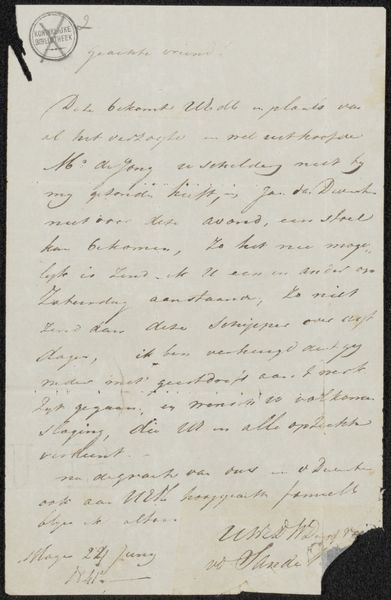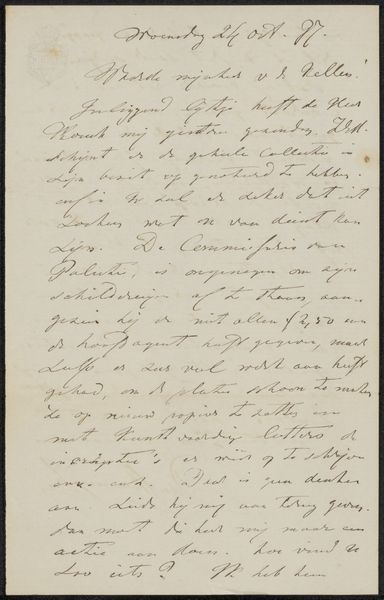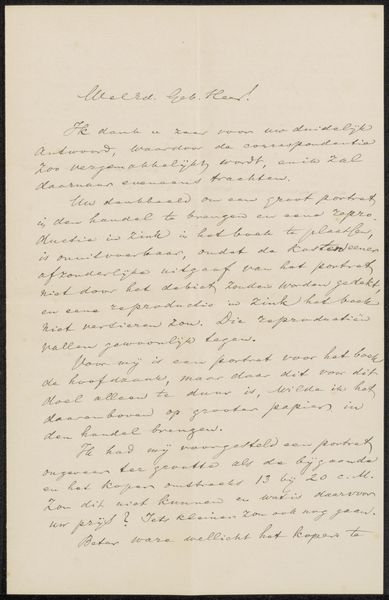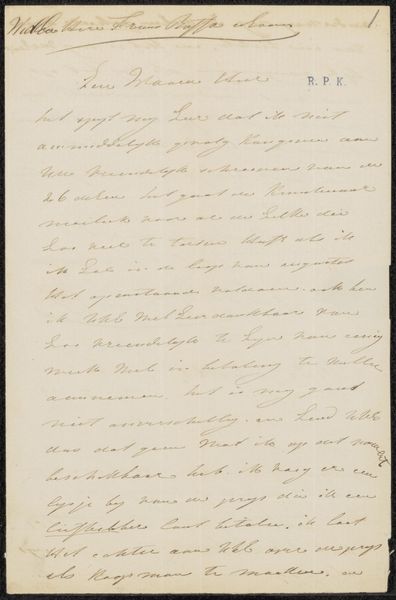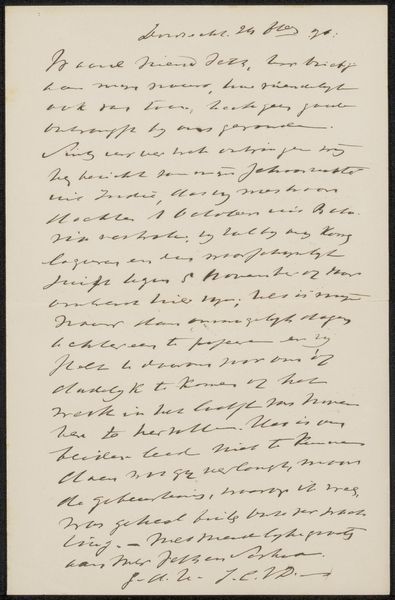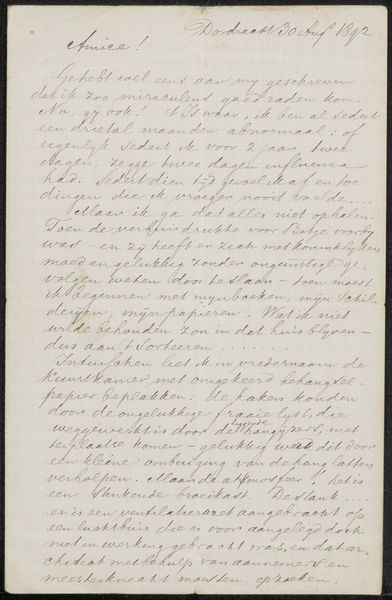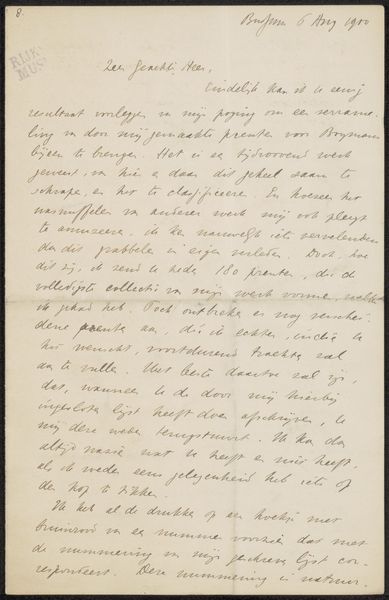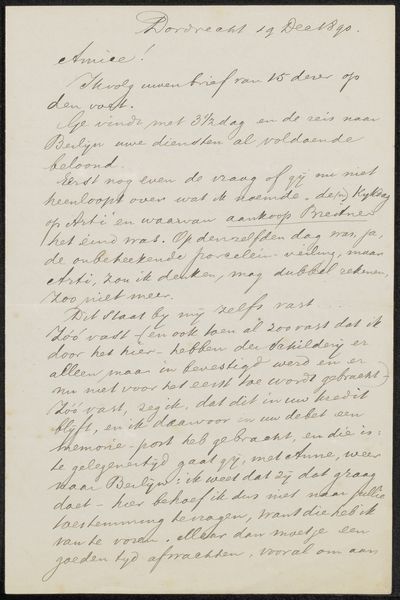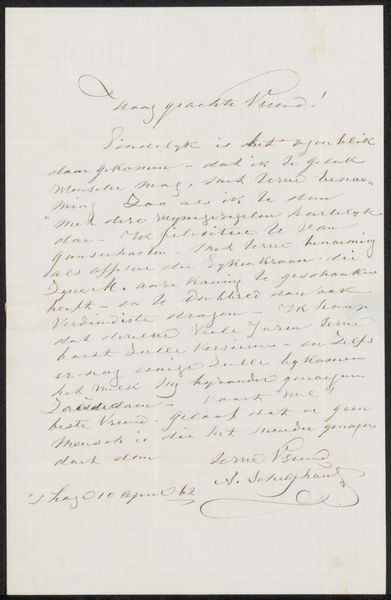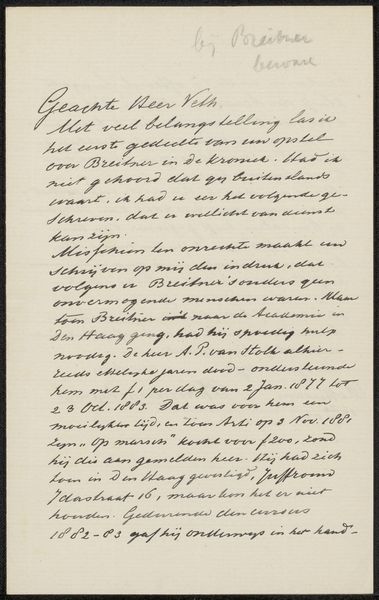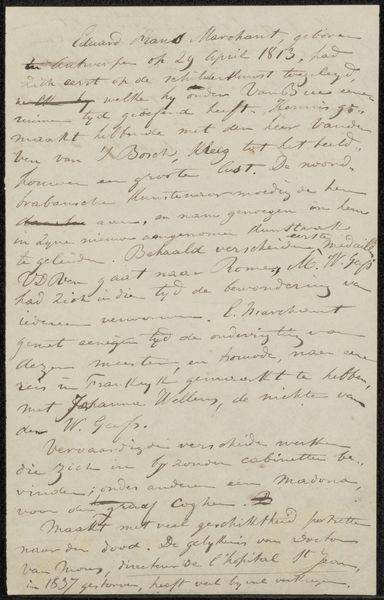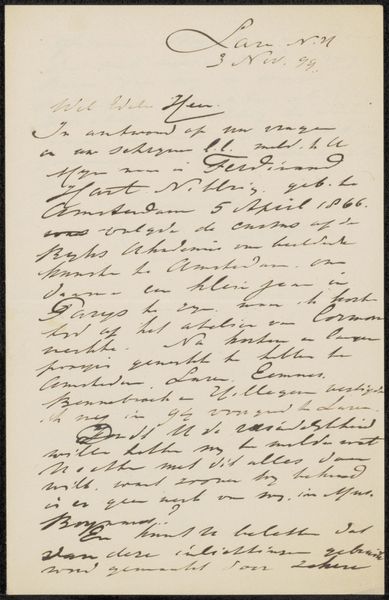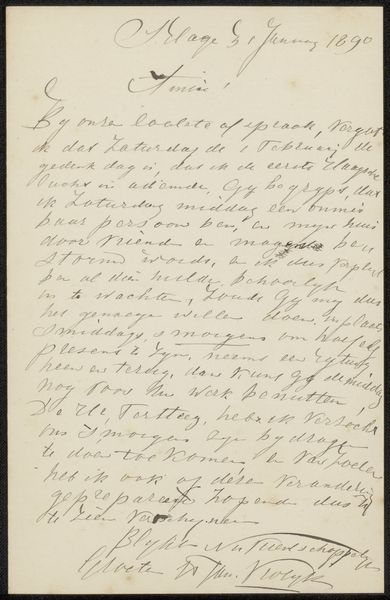
drawing, paper, photography, ink
#
portrait
#
drawing
#
paper
#
photography
#
personal sketchbook
#
ink
#
calligraphy
Copyright: Rijks Museum: Open Domain
Editor: So, this is Paulus Gouda Quint's "Brief aan Jan Veth," potentially from the 1890s. It seems to combine drawing, photography, and ink on paper, incorporating calligraphy. My first impression is its intimacy—it feels very personal. What do you see in this piece, considering its form as a letter? Curator: The form itself is crucial. This isn't just a portrait; it's a communication, likely between artists. I am interested in how artists use their correspondence as a means to negotiate artistic practices, cultural values, and even economic realities. Given the social stratification of the time, how did artistic communities support each other, and how did this manifest in their dialogues? Does the letter give insights on patronage, collaboration, or shared artistic philosophies? Editor: That’s a really interesting angle. I didn't think about the economic context so explicitly. The text does mention financial contributions. Curator: Exactly. Think about who Jan Veth was in relation to Gouda Quint and others within the artistic community of that era. Was Veth a critic, a patron, or fellow artist whose support or opinion held weight? The mention of financial contributions hints at complex networks of support and possibly the economic struggles artists faced, a struggle deeply connected to societal structures. How do artists navigate such challenges, and how do these struggles influence their work and relationships? Does it become an echo chamber for artists, further isolating those outside that network of power? Editor: I guess it makes you wonder who has access to these support systems and who is left out, especially considering issues of gender, class and race during that time. Curator: Precisely! Examining these power dynamics in artistic networks unveils broader social inequalities and cultural biases embedded in the art world then and now. The history is never just *there*; we help produce and reproduce it! Editor: That makes me appreciate the letter as more than just a document—it’s a tiny window into a much bigger picture. Curator: Indeed, art provides us an arena for dialogue that may allow for action.
Comments
No comments
Be the first to comment and join the conversation on the ultimate creative platform.
